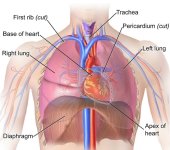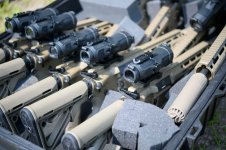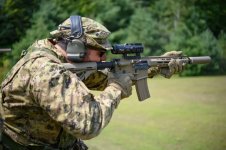- Reaction score
- 24,140
- Points
- 1,260
Yes back when comms, first aid and various other aspect of soldiering where not thought about much.Usta was, during the summer monthe (usually leave time) platoons were encouraged to learn theory of marksmanship (Dry firing, actually ascertaining master eye, etc.) then grab weapons and adjourne to the nearest Big rifle range, Best shots coached, Bisley level oversaw and ammo came by the truck load.
In basic one should have already learned about bayonet POI shift from zero.Learned more in a week about MOA, windage, weather etc than a full year of basic trg! Also learned how firing over a bayonet made a difference.
Please spare me the man gun comments.Also tried Quick kill techniques with 7.62, big difference fm BB guns.
Generally to reliably incapacitate a human target with rifle/carbine one needs to get shots into the upper thoracic cavity, spine, or cranial vault
For the Thoracic Cavity basically a triangle from the tracea to the bottom of the lungs.

Basically a 12” equilateral triangle (to make it easier to visualize)
For the head basically a 6” T shaped area across the eye sockets and downwards

Obviously targets in armor try to cover up most of those areas. So one has even less area to engage.
Most militaries outside of SOF do a shit job of teaching their personnel where to most effectively target - not just for bullet placement, but also just putting the bullet where one is aiming.
I’ve yet to see a Colt Canada rifle or carbine that isn’t capable of at least 1.5MOA accuracy (unless Trooper Blogins has managed to screw it up).









